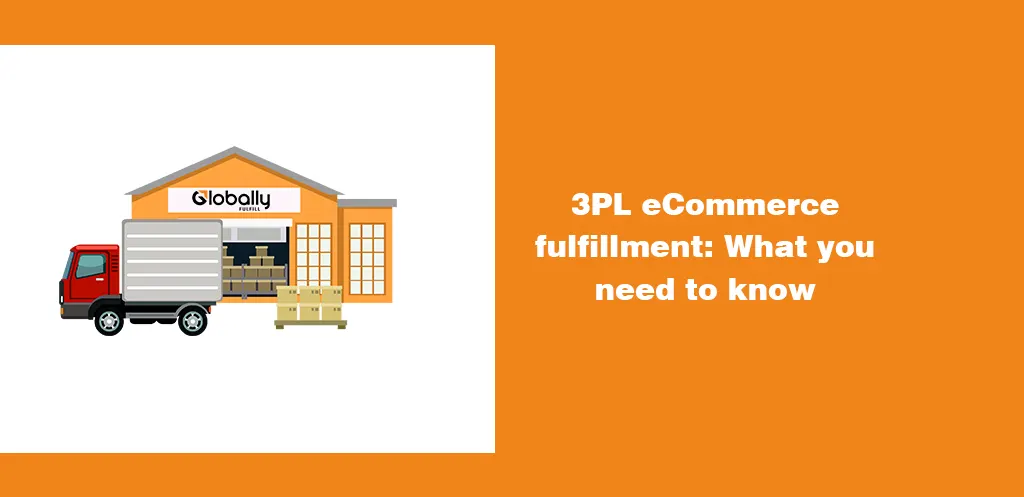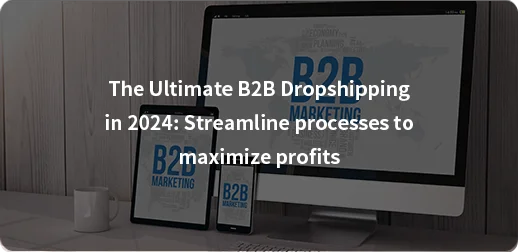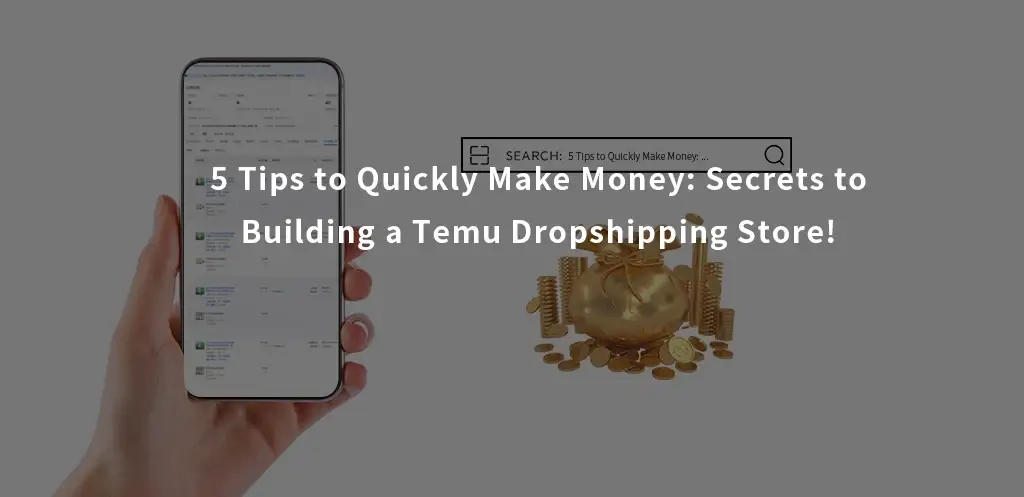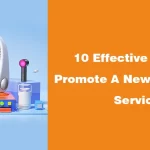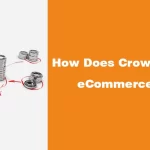You have every incentive to increase your repeat purchase rate as an ecommerce seller.
Already, multiple studies show that businesses with a high percentage of repeat purchases generate more revenue and maintain stronger relationships with their customers.
So if you want to know how you can get customers to checkout purchases a second time, a third time, a fourth time, and beyond, continue reading to discover six research-backed tactics for increasing ecommerce repeat purchases.
Let’s begin!
What is the repeat purchase rate, and why is it important?
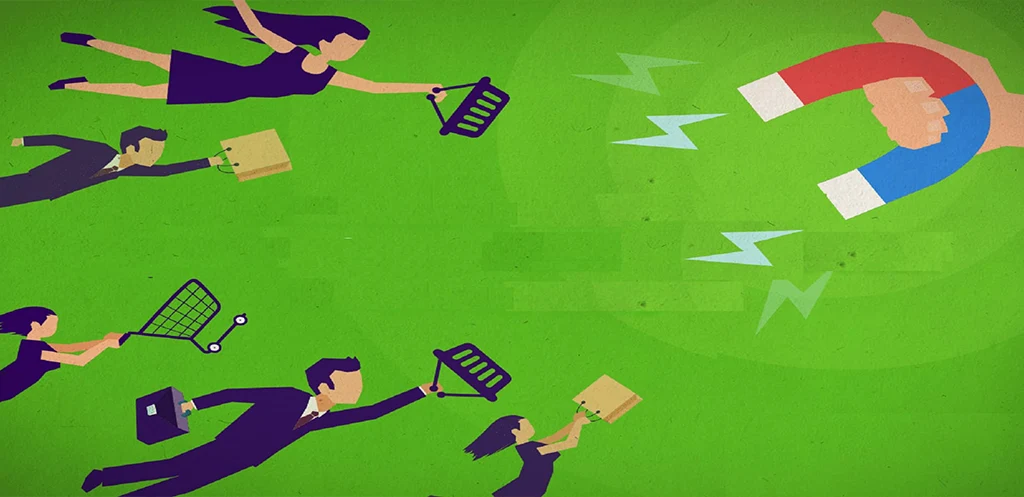
If a repeat purchase is a purchase made by an existing customer, your repeat purchase rate (RPR) is, therefore, the percentage of customers that complete more than one purchase from your store in a defined period.
Your RPR is a crucial metric that demonstrates the effectiveness of your customer retention campaigns.
This insight is particularly important for your ecommerce venture, because repeat customers account for nearly 65% of all your sales. And because by prioritizing customer retention, you not only save customer acquisition costs, but also augment your business’s revenue potential.
Additionally, a good RPR implies that customers find value, trust, and consistency in your products, leading them to return for more. This loyalty contributes positively to word-of-mouth marketing, as satisfied customers are likely to recommend your business to others.
Now that we understand why repeat purchases are important, let’s look at the formula for finding your store’s RPR.
How to calculate your repeat purchase rate

First things first, to calculate your repeat purchase rate, pull order data from your sales channels, ecommerce platform, or CRM software. Or use Google Analytics to track the number of visitors who made purchases on your site.
Once you have your store’s order history, choose a time range and divide the total number of repeat shoppers in that period by the total number of shoppers in that same period.
Or you can always remember this formula:
Repeat purchase rate = (no. of customers who purchased more than once ÷ total no. of customers)
Let’s put this in perspective with an example. If your store had 1000 customers in the past 6 months and 250 made more than one purchase, what would your RPR be?
According to our formula, we’ll calculate 250 (the total number of customers who purchased more than once) divided by (the total number of customers):
(250 ÷ 1000) = 25%
Therefore, your return purchase rate is 25%. So, does 25% qualify as a good RPR percentage, or does it need improvement? Let’s find out next.
What is a good repeat purchase rate to aim for?
There isn’t a universal answer as to what a good RPR score is because it depends on many factors, such as your industry, the kind of products you sell, and your business.
For instance, if you sell expensive products that are long-lasting such as sofas and sculptural furniture, your RPR score is bound to be lower than a store that sells low-cost perishable items such as clothing, flowers, or fast food.
Likewise, if you operate a subscription model that requires customers to renew access to a service, you will have a totally different repeat purchase rate than a retail store selling products for a one-time charge.
As an example, compare two clothing companies Nully and Zara.
Nully runs a rental-first business model that allows shoppers to borrow and return or buy 6 items every month. Meanwhile, Zara sells individual items for a non-recurring payment.
Given how differently these businesses operate, it is unlikely they will average similar RPR scores, and it is not even advisable for them to set similar targets.
With all that said, most ecommerce stores should aim for a 20-30% repeat purchase frequency.
Ask the Chief Marketing Officer and VP of analytics at Facebook (now Meta), and he’ll say if you can get 20-30% of shoppers revisiting your store every month, you’re doing pretty well.
Aligning with this estimate, Shopify reported the average repeat purchase rate for first time customers in 2022 as 27%.
So, to answer our earlier question, yes 25% is a good repeat purchase rate for most merchants.
6 Effective Ways to Increase Repeat Purchase Rate
Now that we know what a good RPR target is, what can we do to get your customers to make repeat purchases?
Let’s answer that with some proven strategies for encouraging customers to buy again.
1.Reward New and Existing Customers
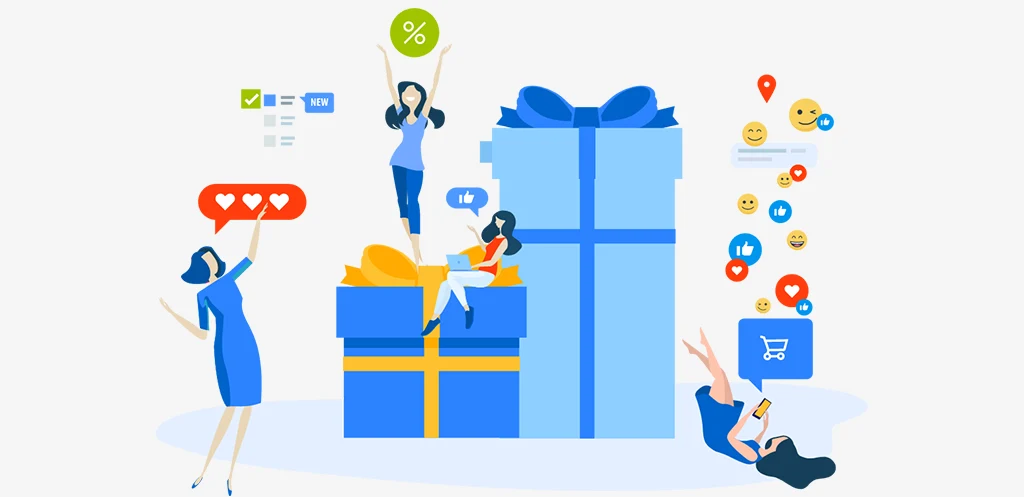
Rewards, especially personalized ones, help to build an emotional connection between a customer and your brand.
Moreover, they tap into the psychology of reciprocity. So when customers receive items of value to them, they become more eager to associate with your brand and buy your products.
When using rewards to compel new and previous customers, you absolutely want to:
(I) Make it timely:
To incentivize a second purchase from a one-time customer, offer rewards immediately after the first purchase, just when the buying experience is still fresh in the customer’s mind.
As you get one-time customers to make more purchases, use special occasions like sign-up or purchase anniversaries, birthdays and holidays to offer rewards for completing more purchases.
(II) Make it personalized:
This works by gathering the information you have on a customer and tailoring your offer to their tastes and interests.
To build a profile on a customer quickly, analyze their search and purchase history on your site and consider what related products you could share that fit in with the theme of their purchases. Or that might help them solve the problems they’ve bought products to solve.
(III) Make it urgent:
Urgency is a good means to increase repeat purchases because it motivates customers to act before a deadline elapses.
When doing so, advertise the rewards as limited offers and use messaging such as “24 hours left,” (even though the offer’s lifetime is longer) “act fast,” “only X hours left” etc. Moreover, to communicate urgency visually, incorporate countdown timers to go along with the page text.
2. Make the Checkout Process Seamless
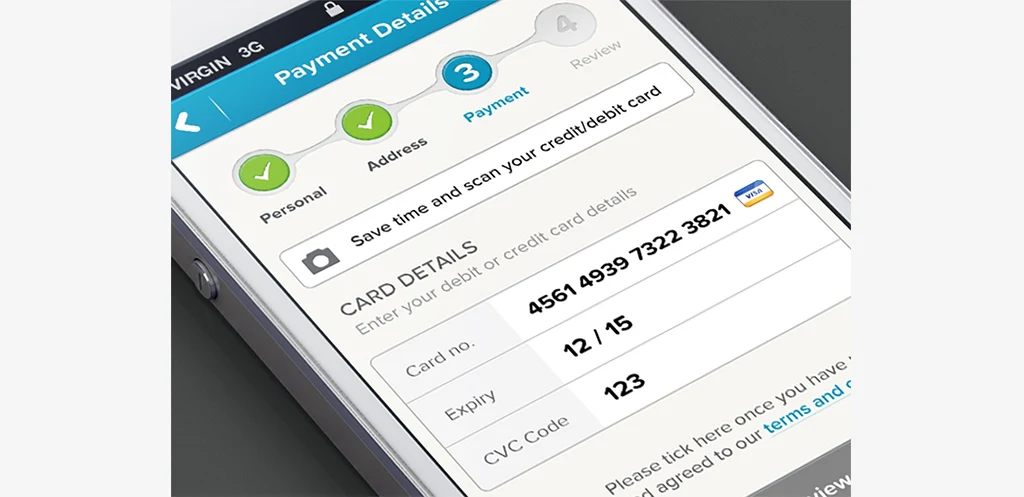
Lengthy checkout processes are frustrating and cause online shoppers to lose patience.
While the consequence of this is most profound on first-time visitors to your site, over 50% of both existing and new customers say a complex checkout process longer than 30 seconds causes them to abandon their carts.
So how can you avoid this?
(I) Enable Ghost Shopping:
Allow new customers to browse your store and make purchases without logging into an account.
At the final stage of checkout, right before you accept the payment, require shoppers to log into an account so you can validate their contact, payment and shipping information.
(II) Enable Auto-fill and Information Saving:
Auto-fill allows logged-in accounts to save their name, address, and contact details after a purchase, so that the next time they check out they don’t have to bother about typing names, addresses and payment details.
Moreover, just like Amazon Prime, consider enabling one-click shopping for repeat customers who have their payments and shipping info saved. As the name suggests, what this does is that it allows previous customers to pay for orders seamlessly with the click of a button.
3. Offer Top-Notch Customer Service
Your “Contact Us” page or site chatbot is the first destination for online shoppers when they have difficulties during the purchase journey.
When this happens, having a customer service team on standby to address the issue and deliver a positive experience will leave the customer satisfied with your brand, which in turn makes them more likely to patronize you again.
When optimizing your customer service, always remember to
(I) Make it accessible:
Ensure that customers can easily reach your customer service team through various channels, including phone, email, live chat, and social media.
Moreover, set workplace standards to ensure service staff respond promptly to customer inquiries and concerns. This is because quick response times demonstrate that you value your customers’ time and are committed to addressing their needs.
(II) Analyze patterns in complaints
To ensure your company is learning from its mistakes, identify patterns in customer complaints and work toward addressing them.
Perhaps your store interface is too clunky and customers have a tough time finding products. Or your sizing options are too limited and customers need the help of a service technician.
Whatever the common problems are, take note of them and actively search out how you can fix or improve them.
4. Set up Referral Programs
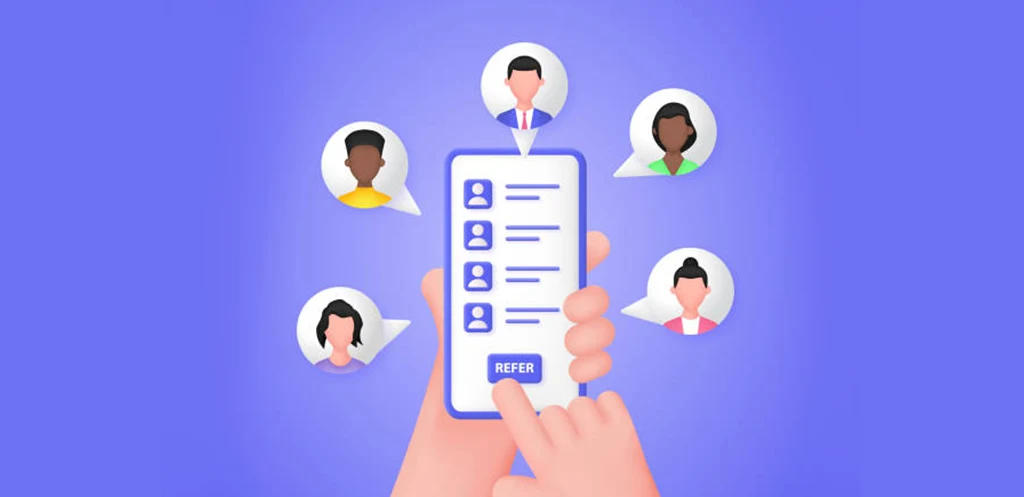
Referral programs motivate existing customers to promote your brand to others.
It’s a fact that consumers are growing increasingly intolerant of ads and that they are looking for voices they can trust, not just salespeople.
Thus, by getting people to make personal recommendations to their friends, such programs take advantage of this behavioral trend and save you thousands in advertising and traffic spend.
Since your goal is driving repeat purchases, my sole tip for running a referral program is that you should make the incentive for existing customers as good as the rewards for new customers.
Take Allbirds, for example. The footwear company offers previous customers $15 off their next purchase for every new customer they bring. And new customers get $15 in store credit, so there’s an incentive for all parties to participate.
See also: FREE organic traffic sources for dropshipping companies
5. Build an Email List

An email list is a collection of names and email addresses belonging to people who gave you permission to send them updates and promotions from your business.
Because email subscribers join your list from your site and verify their identity by clicking on the verification email you’re meant to send, they’re interested in what you have to offer so it’s easier to convert them to repeat customers.
The easiest way to build an email list is to offer website visitors freebies such as store credit, discounts and a free product in exchange for their email.
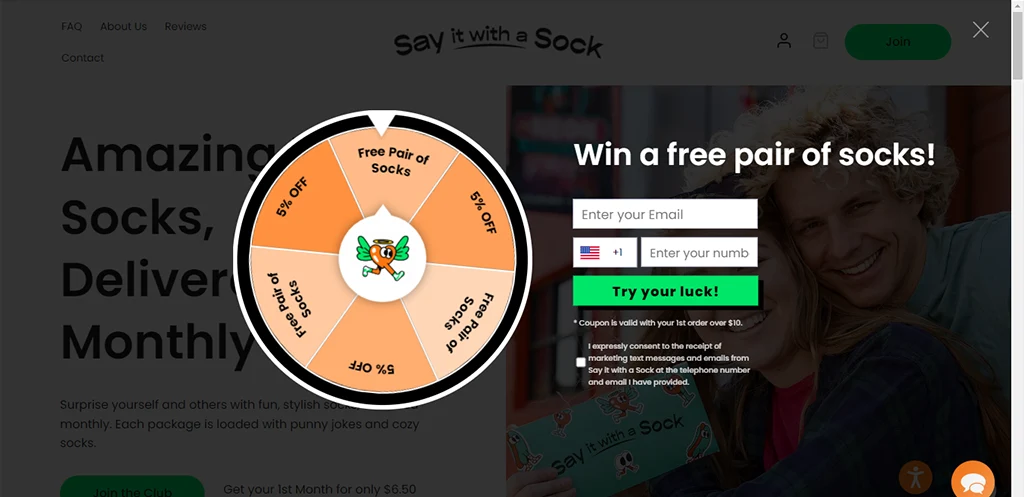
Like this socks retailer, Say it with a Sock, you can make the offer (called an email capture) pop up each time a new visitor goes to your site and when a previous visitor hasn’t gone to your site in weeks or months.
See also: SEO: Complete checklist for ecommerce and dropshipping stores
6. Personalize Communications and Shopping Experiences
Personalization deals with tailoring offers and messaging to specific customers. Your online business can do this by leveraging information that.
Customers share during account set-up, such as their first name, location, birthday, etc.
And information collected when they interact with your site like the products they searched for, the items they last bought, and how often they log into your website, etc.
Using what you know about the customer, you can apply personalization by:
Addressing the customer by name:
Go beyond the generic “hi” or “hello” and send emails that include the receiver’s first name.
On average, people receive 121 emails each day so to get your message across you need to be deliberate about establishing a connection.
Give personalized Product Recommendations:
Analyze your subscriber’s search and purchase history on your site before making recommendations.
This is so what you recommend is in line with their tastes. For more efficiency, consider using a recommendation engine to automatically filter through the customer’s data and make relevant suggestions, just like the example from Sephora below.

Personalized Email Send Times:
Send time optimization allows you to distribute one message from an email campaign (i.e a promotion email) to several people but at different times to ensure each individual receives their email at the time they are most likely to engage.
Using AI algorithms, you can profile each subscriber based on previous email opens and clicks. Based on this data, estimate the optimal send time for each subscriber and send at those times.
Final Thoughts
That’s it for our guide to increasing your ecommerce repeat purchase rate.
As we part ways, go ahead to calculate your RPR for the past 3, 6, 9, and 12 months in order to get an idea of your performance for each quarter last year.
If your score consistently averages below 20%, pick two or three of the fixes we discussed today and continually monitor your RPR trajectory to know what’s working and what’s not.
If you found this article to be helpful in any way and you want to see more of these, visit our Blog where we post new guides to dropshipping, ecommerce and marketing every week.


